Kicking off Tuesday's proceedings was a reading of the 109-page jury instructions by presiding Judge Lucy Koh, who said, “I need everyone to stay conscious during [this] — including myself.†In-court reports from All Things D described the long list of 84 instructions as "byzantine," saying the dry document covered details of patent and antitrust law, willful infringement and the dilution of trade dress. At times Judge Koh called for everyone to stand up and "get the blood flowing again."
Apple lawyer Harold McElhinny wanted to make three main arguments, reports The Verge, the first being "documents are the most valuable key in the truth-finding function." He went on to say that witnesses can be incorrect, "historical documents are almost always where the truth lies."
The second point, and one of the main arguments in Apple's case, was to take into consideration the chronology of events leading to litigation. McElhinny expounded on chronology for nearly 20 minutes, starting with iPhone development in 2003 and ending with Apple's allegations that Samsung copied the "look and feel" of the iPhone and iPad.
Presented for the jury were two familiar slides illustrating the evolution of Samsung product before and after the iPhone first launched in 2007. The information was also made available during the trials' testimony phase in a single exhibit demonstrating the product timeline of Samsung's handsets and tablets post iPhone and iPad.
Source: Apple v. Samsung court documents
McElhinny pointed out the "crisis of design" document was in response to the lack of success Samsung suffered directly after the iPhone launched. In the comparison document, the Galaxy S was pitted side-by-side against the iPhone, with Samsung engineers taking note of the many features iOS implemented more efficiently than the Korean company's solutions.
The lawyer then called back to internal Samsung emails that showed Google, maker of the Android operating system, demanded the Korean company change the designs of their Galaxy S smartphones and certain tablet products because they looked too similar to Apple's iDevices.
Concluding the Apple counsel's second point of creating a chronology was McElhinny's assertion that Samsung's top executives "were bound and determined to cash in on the iPhone's success." He attributed the company's resurgence in the marketplace to the allegedly copied features, noting sales "took off after the first iPhone-derived product was added to the mix," referencing the Galaxy S. “They were copying the worlds most successful product,†McElhinny said.
As for the third argument, Apple's attorney brought the Korean tech monolith's case handling into question.
“No Samsung executives were willing to come here from Korea,†McElhinny said. “We called some of their top people. … Samsung had a chance to defend itself in this case; instead they sent you lawyers. Instead of witnesses, they brought you lawyers.â€
Next, Apple rebuked Samsung's contention that the iPhone's patents are obvious, functional and based on prior art. McElhinny said there "has been a complete failure of proof" regarding the invalidation of Apple's design patents, alluding to Samsung's lack of evidence to support such legal claims.
“Samsung was the iPhone’s biggest fan,†McElhinny said. “They knew a good thing when they saw it. They tried to compete with it, and when they couldn’t, they copied it.â€
The same was said in regard to claims against Apple's utility patents such as the pinch-to-zoom and rubber-banding features seen in iOS.
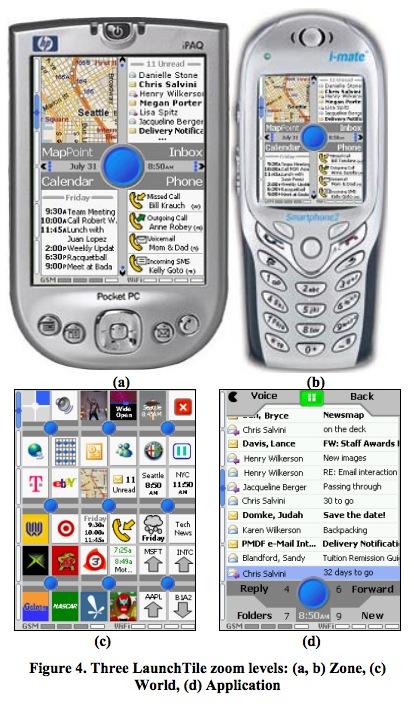
LaunchTile technology pointed to as prior art against Apple's utility patents.
Source: University of Maryland Dept. of Computer Science
Also touched on was consumer confusion relating to certain Samsung products, with the lawyer presenting a Best Buy survey that studied the reasons why customers were returning the Galaxy Tab. During testimony, Apple was quick to point out that a number of customers returned the Samsung tablet after realizing it wasn't an iPad. It was later reported that many more customers returned the Galaxy Tab due to malfunctions than mistaken identity, though the metric is still not a positive for Samsung.
Wrapping up, McElhinny said there are two factors driving the damages claims: Samsung sold 22.7 million infringing handsets to date; and sales of said handsets generated $8.16 billion in revenue for the company.
“The damages in this case should be large, because the infringement has been massive,†McElhinny said, presenting four different damages proposals ranging from $519 million to $2.5 billion.
To page 2 of 3: Samsung's closing arguments
Unlike Apple's closing argument, Samsung brought up case handling first, taking jabs at the the Cupertino, Calif., company's business practices. Charles Verhoeven, counsel for the Korean company, described Samsung as Apple's biggest competitor, and alluded that the iPhone maker wanted to compete in the courtroom rather than the marketplace.
“Apple’s here asking for what it is not entitled to,†Charles Verhoeven said. “It’s here asking you to prevent its largest competitor from giving consumers want they want. It’s attempting to block its most serious competitor from even playing the game.â€
Verhoeven issued some lofty claims in his remarks, saying to the jury, “Your decision, if it goes Apple’s way, could change the way competition works in this country."
The Samsung lawyer pushed the repeated argument that Apple's designs were part of a natural design evolution, not any unique invention. He cites the change in design of HDTVs with flat front panels as an example of this naturally occurring change in design.
“Guess what, every single smartphone has a rectangular shape with rounded corners and a big screen,†Verhoeven said. “Just walk through Best Buy. So Apple is here seeking $2 billion in damages for what? That little ornamentation on the screen. It’s amazing, really. Apple thinks it’s entitled to have a monopoly on a rounded rectangle with a touchscreen.â€
Verhoeven dug into Apple expert witness Peter Bressler's testimony, reminding jurors that small details in design may be of importance. To this end, Bressler's take on the flat front face of the iPhone was attacked as a number of Samsung smartphones were presented, including the Galaxy S 4G.
Next up was Verhoeven's take on Apple's consumer confusion argument, with the attorney saying normal consumers would have no problem distinguishing one from the other. Samsung denies copying or trying to create confusion in the marketplace, Verhoeven said, adding that "Apple has no evidence" to bolster such allegations.
Once again, the rectangle with rounded corners argument was brought up, a bone of contention seen multiple times before both in and out of court. Samsung contends that Apple cannot patent the rectangle shape, and argues against the iPhone's rounded corners by saying many devices have the feature because it is integral to usability.
Verhoeven then brought out a Droid Charge to illustrate how the device's startup sequence is unique when compared to the iPhone, discounting the iPhone maker's claim of consumer confusion. The Charge must first cycle through a Samsung logo, the Droid animation sequence, the proprietary Android skin and a user must press a button before reaching the application screen Apple asserts is being infringed.
As for testimony from Apple's expert witness Susan Kare, Verhoeven scoffed at the idea of being able to patent "a matrix of icons." He brought up the Galaxy Fascinate user interface, which Apple argues Samsung copied from their trademarked icon designs. Kare previously testified that she found "substantial similarities" in the two companies' UIs.
“There are only two icons that Apple’s expert witness said were similar, the phone and the clock," Verhoeven posited. "And I would submit that the vast majority of the icons are substantially different. Let’s not pretend you can patent a colorful row, a colorful matrix of icons.â€
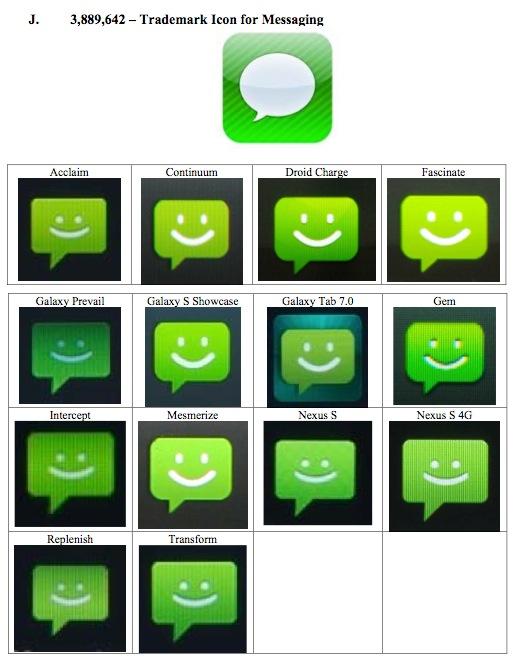
Apple exhibit comparing Samsung messaging icons with the iOS Messages app.
Source: Apple v. Samsung court documents
Getting into the meat of the suit, Verhoeven calls Apple's assertion of copycatting "an intentional attempt to mislead the jury." To drive the point home, a slide was presented showing a chart of numerous Samsung phones, some of which Apple failed to include when making its case.
“They’re intentionally ignoring an entire category of phones,†Verhoeven said. “This is a shell game. They’re pretending these phones never existed.â€
Instead of using Samsung's witnesses to make his closing arguments, the lawyer attacked testimony from Apple's witnesses.
“Counsel for Apple is trying to mislead you,†Verhoeven said, talking to the jury. “There is no bad intent. There is no copying. Samsung is a good corporate citizen. All it wants to do is make products that consumers want. All this copying evidence is hand-waving by Apple. Why? Because they don’t have anything else.â€
Wrapping up, Samsung called Apple's damages number "ridiculous," and said “Apple didn’t invent touchscreen. Apple didn’t invent the rectangular smartphone with rounded corners. And the intellectual property it is asserting in this case is not worth the money Apple is asking for.â€
To page 3 of 3: Rebuttals
Rebuttals started with Apple lead counsel William Lee, who had some strong words for Verhoeven's closing remarks.
“There’s a saying among attorneys,†Lee said. “If you have the facts, stand by the facts. If you don’t, attack your rival’s clients, attack their witnesses and attack their lawyers. And that’s what Samsung has done.†He added that companies should "Compete on [their] own innovations."
More to the point, Lee rebuked Samsung's claims that Apple is attempting to stifle competition, noting research and development investments must be protected in order to survive in the marketplace.
“We have to protect our investment in these innovations. Because if we don’t, we won’t have people like Apple spending five years in a room coming up with a device that revolutionizes the mobile phone," Lee said. "Apple took five years to bring this revolution to us, Samsung took three months to copy it. That’s truth, and that’s simple, clear, and undisputed. Samsung copied our products, and they made $8 billion dollars doing it. What they’re saying to you is this: we don’t want to pay.â€
Lee went on to compare the two companies' patents-in-suit, proposing the difference between the two is that Apple's properties are "commercially successful and have been universally praised and copied," while the Samsung products which use the Korean company's inventions asserted in the case "haven’t been praised or copied by anyone.†The lawyer went on to dismantle the Samsung patents in question, including certain 3GPP patents, by restating standards-essential FRAND licensing arguments posed over the course of the trial.
The lead counsel concluded by saying, “Competition and innovation in this field has been accomplished by real innovators and scientists, not lawyers. Apple wants to compete fairly and squarely. Taking someone else’s intellectual property as Samsung did is not fair and square.â€
Following Lee was McElhinny, who said if the jury finds Samsung guilty, they "will have reaffirmed the American patent system."
Samsung's Verhoeven used his remaining 14 minutes to argue FRAND patent issues as well as patent exhaustion in regard to Intel chips used by Apple in the company's products. As most of the time was spent rebutting Apple's claims, not much was said in the way of concluding statements besides the final remark, "Let's have Samsung compete freely in the marketplace instead of Apple trying to stop it in the courtroom."
With that, Apple v. Samsung arguments ended. The jury has received the much-disputed verdict form and will begin deliberations on Wednesday. A timeline for judgment is hard to estimate, though a decision could come as soon as this week.
 Mikey Campbell
Mikey Campbell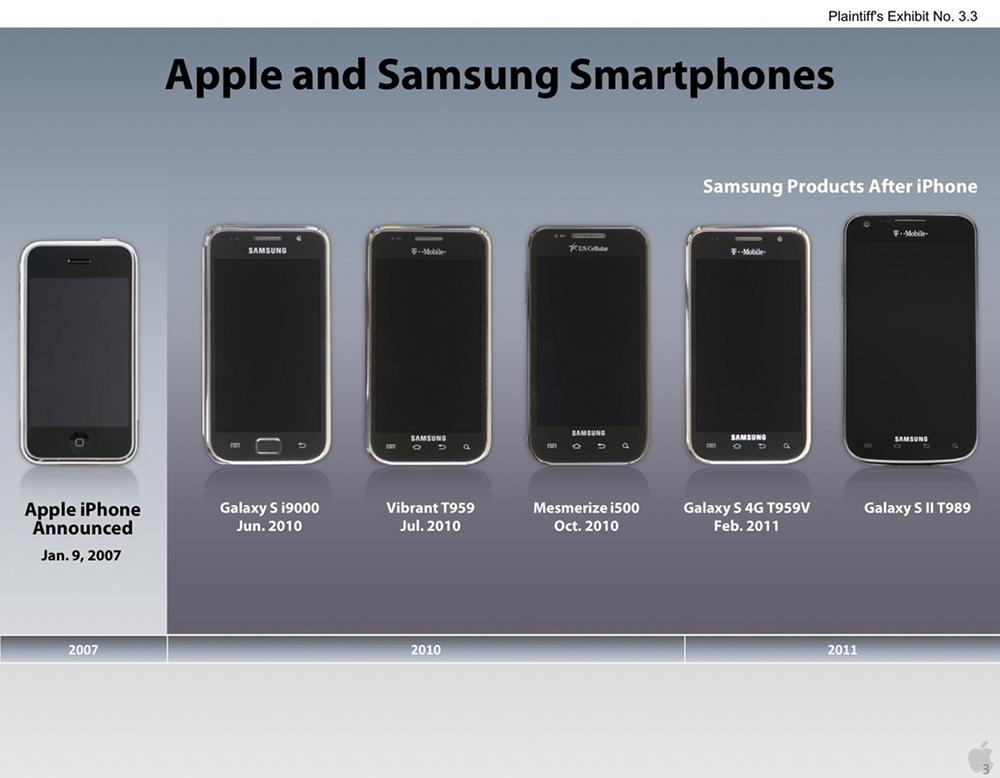
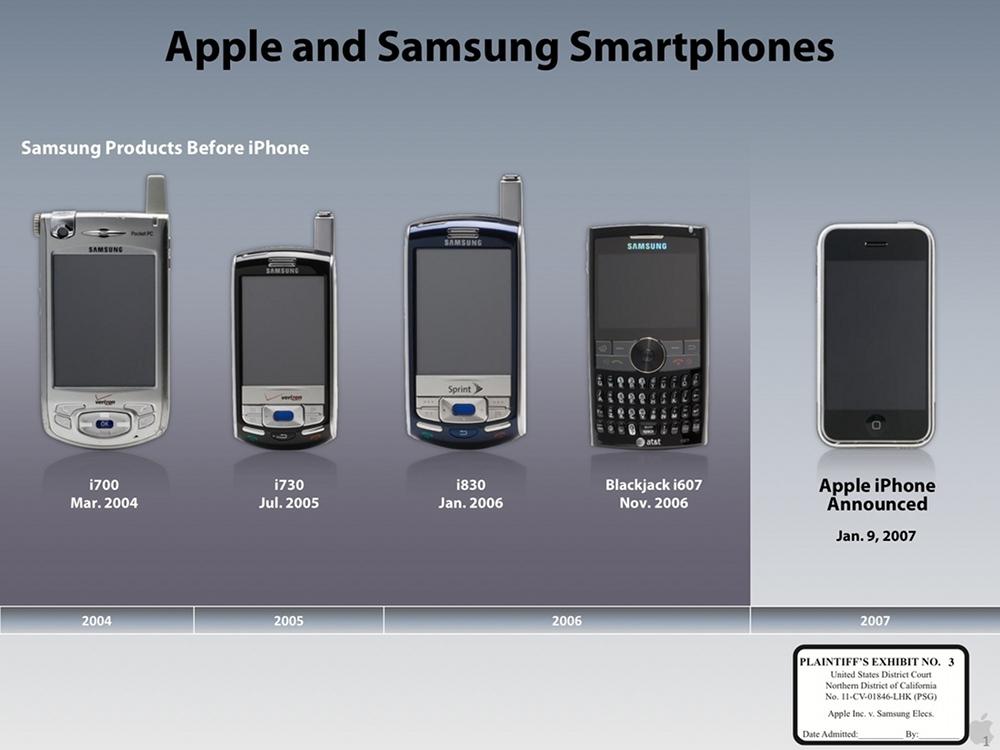

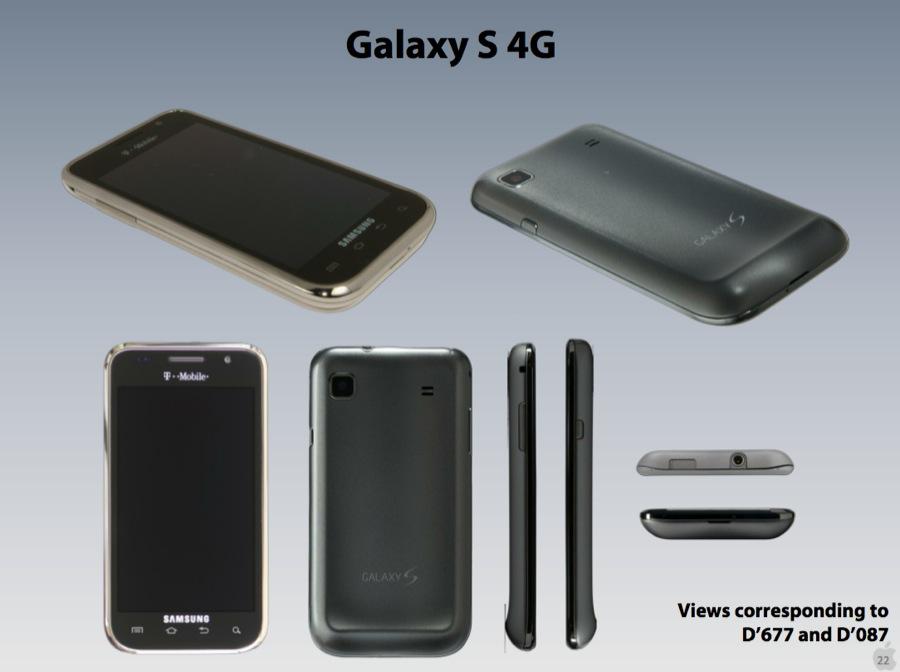







-m.jpg)






 Charles Martin
Charles Martin
 Wesley Hilliard
Wesley Hilliard
 Stephen Silver
Stephen Silver
 William Gallagher
William Gallagher

 Marko Zivkovic
Marko Zivkovic
 Andrew Orr
Andrew Orr
 Amber Neely
Amber Neely









139 Comments
Well, that was quick.
I told you it would be over on Tuesday, it was scheduled like this.
And it's not that they couldn't, it's that they chose not to. They're quite capable of creating designs that don't look like the iPhone. Just look at everything they made before it came out.
Also, I hope I got all the question marks. If anyone sees any other errors, as always, let me know (PM would be fastest)!
Here's hoping the jury decide in Apple's favour.
Here's hoping the jury decide in Apple's favour.
If they lose, at least there will still be vodka....
And Samsung says Apple only owes them something like 500 mil, which isn't that substantial to Apple.